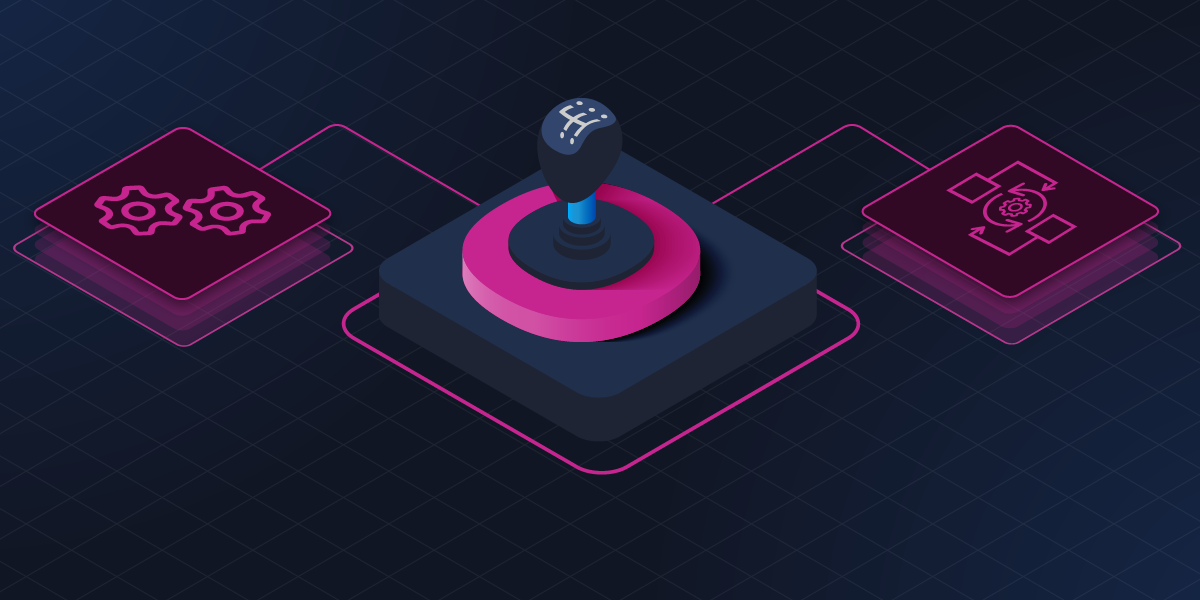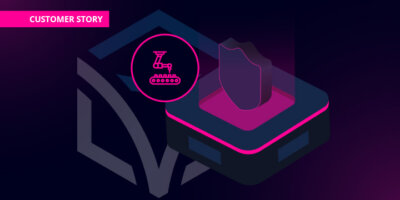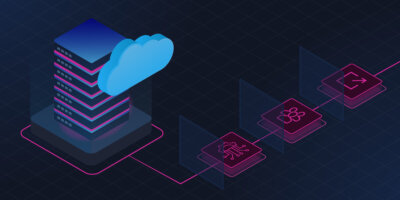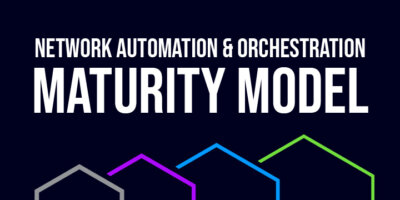Share this

Table of Contents
Many organizations have come to the realization that while the business benefits they’ve realized from network automation have been promising, they need more – more productivity, more cost reductions, and more efficiency. Innovative teams have taken automation toolsets as far as they can go and have hit some real limitations in their ability to continue to scale their efforts. We are seeing a number of those teams embrace orchestration as a technology that can not only help them scale more effectively, but can also provide additional benefits beyond what they get from automation. If we look back, the terms “automation” and “orchestration” have been around for years. In the past, they’ve been used interchangeably, but defining and understanding the difference helps organizations adopt automation and orchestration solutions and apply them to the multi-domain networks that are so prevalent in today’s current environment.
Network automation is focused on automatic execution of tasks within a network domain. Unlike the task-centric focus of automation, orchestration is focused on coordinating activities as part of larger processes. In most environments, efforts begin within teams, creating isolated pockets of automation. Later, teams begin to coordinate, connecting the pockets of automation with orchestration, digitizing beyond the individual tasks to the overall process. This way, efficient automations built with domain-specific tools can be coordinated so services can be delivered as fully automated workflows.
One of the factors that complicates orchestration efforts is network complexity.
Managing Across Increasing Network Complexity
Today’s networking landscape is more complex than ever, consisting of multiple domains distributed across networks. For example, you can have a data center network, multiple wireless networks, an SD-WAN network, and multiple cloud networks included within a single organization. And each of these different networks has become specialized, with its own architectures, technologies, and management methods, resulting in more tools, applications, and solutions needed to manage them. Thus, we have a multi-domain networking challenge.
What you often see as teams attempt to manage across multi-domain networks: pockets of network automation across the network as each team deploys various solutions and tools to manage each domain. So for networking teams, the question becomes, “how do you effectively automate across every network domain and connect pockets of automation?”
Cue the Orchestration Layer…
Network orchestration is the next step in the evolution of network management as organizations address the need to automate network operations across multiple domains. Network orchestration coordinates numerous tasks, integrates multiple systems, makes real-time decisions based on a vast quantity of outputs, and adapts to ever-changing conditions. But the overall goal of orchestration is to provide a wide-ranging view of automation technologies, including low-code, RPA, AI, and legacy systems.
The orchestration layer is where all of that takes place. It’s where the connections and instructions between the connector and those of multiple third-party applications are created. The orchestration layer also adds the ability to manage data formatting between separate services — where requests and responses need to be split, merged, or routed — eliminates repetitive tasks, and supports faster deployments in different cloud infrastructures.
The orchestration layer aims to optimize and streamline multiple frequent, repeatable processes, guaranteeing more efficient network management and faster, more accurate deployment of services. For example, network teams use orchestration to automate IT processes, including server provisioning, cloud orchestration, database management, application orchestration, and more. As they have learned the value of network automation, organizations are also seeking to incorporate more service throughout layers of the stack to meet the standard that many refer to as “XaaS (Everything as a Service).” The orchestration layer is where they’ll tie all those automations together.
Getting There Requires Alignment
For organizations to evolve their automation and orchestration strategies, they must address both the technological and organizational challenges of implementing large-scale orchestrations. Orchestration only becomes possible by utilizing technologies that can provide connectivity between the existing pockets of automation and coordinate across different technology domains. Once the technology challenges are solved, business leaders will need to align on how they will expose their business processes to the orchestration layer securely and effectively. This may require a level of trust that can only be developed through education, testing, and validation of the orchestration system and workflows.
For most organizations, the benefits of orchestration will far outweigh the challenges above, as early adopters have seen dramatic reductions in process execution time (90 percent reduction is not uncommon) as well as significant improvements in productivity and efficiency. With numbers like that impacting organizations, the words “automation” and “orchestration” can no longer be interchangeable.
Originally published on solutionsreview.com.




